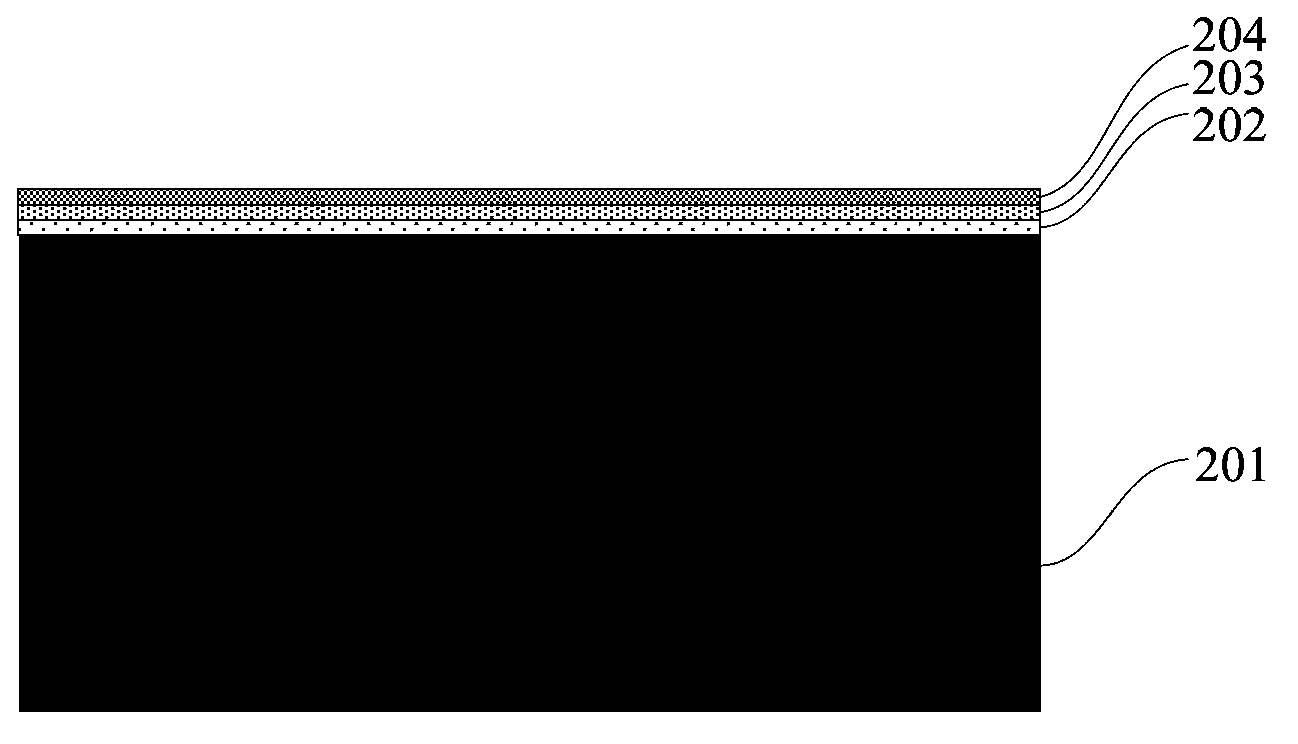Tungsten-antimony-tellurium (W-Sb-Te) phase change material deposition method and phase change storage unit preparation method
A technology of phase change material and phase change storage, applied in the field of microelectronics
- Summary
- Abstract
- Description
- Claims
- Application Information
AI Technical Summary
Problems solved by technology
Method used
Image
Examples
Embodiment 1
[0047] Such as Figure 1~Figure 4 As shown, this embodiment provides an atomic layer deposition method for a tungsten-antimony-tellurium phase change material, which at least includes the following steps:
[0048] 1) Introduce SbCl on the substrate 3 Pulse to wash unabsorbed SbCl 3 , and then introduce (R 3 Si) 2 Te pulse, cleaning unabsorbed (R 3 Si) 2 Te and reaction by-products;
[0049] 2) Introduce H to the above substrate 2 with Si 2 h 6 Mixing pulses, cleaning residual H 2 with Si 2 h 6 , and then introduce WF 6 Pulse to clean residual WF 6 and reaction by-products;
[0050] 3) Introduce SbCl to the above substrate 3 Pulse, wash residual SbCl 3 , and then introduce (R 3 Si) 3 Sb pulse, cleaning unabsorbed (R 3 Si) 3 Sb and reaction by-products;
[0051] 4) Repeat the above steps 1)~2), or steps 1)~3) to form a cycle.
[0052] It should be noted that, in view of the difficulty of deposition growth in step 2), in order to ensure the deposition growth ...
Embodiment 2
[0067] Such as Figure 5~Figure 10 As shown, the present embodiment provides a preparation method of a phase-change memory unit. The phase-change memory composed of the phase-change memory unit can be a variety of functional devices that use the principle of phase change to store data, such as using electric pulse programming Chalcogenide random access memory, or a storage disc programmed by laser pulses, or a memory programmed by electron beams, or a memory programmed by other energy particles, the preparation method of the phase change memory unit includes the following steps:
[0068] Such as Figure 5 As shown, step 1) is first performed, providing a semiconductor substrate 101 , and preparing the lower electrode 102 on the surface of the semiconductor substrate 101 . Specifically, the semiconductor substrate 101 is cleaned first, and then the lower electrode 102 is deposited on its surface, which can remove organic matter, metal ions, oxides and other impurities on the s...
PUM
| Property | Measurement | Unit |
|---|---|---|
| thickness | aaaaa | aaaaa |
Abstract
Description
Claims
Application Information
 Login to View More
Login to View More - R&D
- Intellectual Property
- Life Sciences
- Materials
- Tech Scout
- Unparalleled Data Quality
- Higher Quality Content
- 60% Fewer Hallucinations
Browse by: Latest US Patents, China's latest patents, Technical Efficacy Thesaurus, Application Domain, Technology Topic, Popular Technical Reports.
© 2025 PatSnap. All rights reserved.Legal|Privacy policy|Modern Slavery Act Transparency Statement|Sitemap|About US| Contact US: help@patsnap.com



